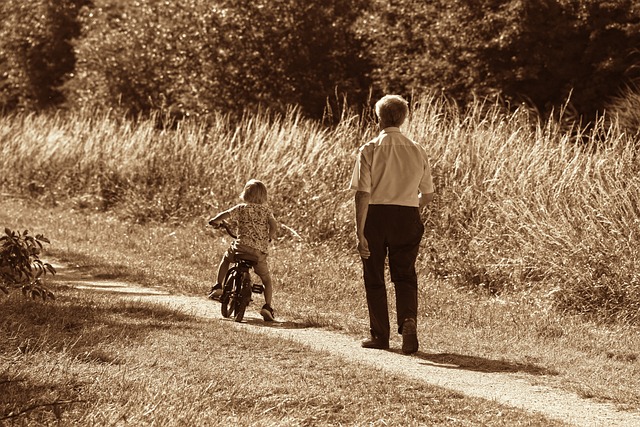
Camping offers your kids the opportunity to get out and explore the great outdoors. It is also a way for you to bond with your tween. However, camping with tweens can be a little tricky. Teens can be bored or complain about the activities. If you have a camp plan, you can make camping trips memorable.
These are some of the most important things to keep in mind when planning your next camping adventure together. First, ensure that they are enthusiastic about going camping. If they are not, don’t force them to go camping. Make sure you find camp activities that your tween enjoys.
You might consider building gnome homes. You can make them from rocks and sticks, or any other natural material. You can find many interesting and fascinating items at the campsite by going on a scavenger hunt. You can do this together or independently.
Camping activities that you can include are cooking around the campfire. This can be both fun and safe. To make it even more enjoyable, you can cook their favorite meals over the fire.

Your tween may be interested in playing games, so you can also find ways to have them involved. You can play games with your tween, such as darts and cornhole. There are a variety of other fun camping games to try.
Another activity teens love is hiking. Hiking is a great activity, but can also be time-consuming. To help make the most of your hike, pack a few walkie-talkies. Also, make sure to bring a flashlight with you so you can find your way out of the dark when necessary.
Another fun camping activity is stargazing. It is one of the best ways to connect with your tween. Many campgrounds offer stargazing nights, and the sky is definitely something that your tween will appreciate.
Consider taking your tween to a local campground that has a bike trail if they love riding bikes. A team challenge can be organized by bringing along your favorite RC cars.
Tweens are fond of playing games, so why don't you give them the chance? Let them create an obstacle course. Use things you have around the camp or at home to build it.

You can also make a nature map at camp. Draw a map of the area and then have the kids add roads and places. Talk about the colors and textures that they see. Understanding the vocabulary will make it easier for them to get out and look at the natural world around their home.
In addition to all the fun camping activities for teens you can bring enough water and food for your whole family. You can mix healthy snacks with salty. Don't forget your hammock!
FAQ
These are five great outdoor activities for families.
You can spend your time outdoors in many different ways, whether you are an outdoorsman or city dweller. There are so many ways to bond with your family, such as hiking, camping, fishing and even scuba diving.
These are our top picks of outdoor activities for children of all ages.
-
Hiking - Hike along trails or explore a state park near you. Be sure to bring water and snacks along with you for the journey. Bring binoculars if you'd like to spot wildlife while out walking. If you plan to stay overnight, pack tents and sleeping bags to keep everyone warm.
-
Camping – Camping is a great way to take in the natural beauty of nature without ever leaving your house. Choose a campsite close to shops and restaurants so you can pack light. Bring blankets, pillows, and flashlights for nighttime adventures.
-
Fishing – Fishing can be enjoyed by both adults as well as children. Kids love catching fish and learning how to bait the hook. Adults love watching their children catch dinner. Choose a lake, pond, or stream where you can cast a line for bass, trout, or catfish.
-
Kayaking lets you experience nature from a whole new perspective. Kayaking is a great way to explore rivers or lakes. During your excursion, keep an eye out to see if there are any birds, turtles or whales.
-
Bird Watching - Bird watching is one of the most popular hobbies in America. It's easy for people to understand why. Visit a nearby bird sanctuary or national parks. Enjoy looking for hawks, eagles or other feathered friends.
How can I determine if my child is ready for a ride on a bike?
Children who are still learning to walk and need to balance should do so before learning to ride a bicycle. Begin by getting your child to stand on one foot. Then, gradually increase the distance between her feet. After mastering this skill, your child can now stand on both her feet simultaneously.
A tricycle or scooter should be possible for children who are already able to walk. To ensure your child's safety, ask your pediatrician.
If your kid is older than four years old, he or she is probably ready to start riding a bicycle. Start by teaching your child how to balance on two wheels. Then teach your child how to steer using hand signals. Finally, show your child how to stop safely by applying the brake.
Safety must always be top priority, regardless of your child's age. Your children should learn to look both ways when crossing roads and to wear helmets when riding a bicycle.
How long should I remain outside with my children for?
Weather conditions will affect the amount of time that you spend outdoors. You should not expose your children to extreme heat, humidity, or cold.
Children should not be left unattended in direct sunlight, especially during hot weather. They should limit outdoor time to no more than 30 minutes per day.
In rainy weather, children should not be allowed to play outside longer than 15 mins. You should bring extra water and snacks if your children must be left alone for any length of time.
Is it safe to allow my child to climb trees.
Trees are strong structures. If you don't evaluate your child's abilities, climbing trees can pose risks.
To climb a tree higher, you must use both your hands and your legs. This means your child needs to be able to use both arms and legs to maintain balance.
Also, your child should be able and able to move easily between branches. This requires strength as well agility.
So if your child isn't physically ready to climb a tree, don't force her.
You can still enjoy climbing a tree together by sitting on the lower limbs or using a ladder. You can also sit together on a branch to read books.
Statistics
- The U.S. outdoor recreation economy supports about 5.2 million jobs, generates nearly $788 billion in consumer spending, and accounts for 2.1 percent of GDP. (wilderness.org)
- A 2020 National Recreation and Park Association survey found that about 82 percent of people in the U.S. consider parks and recreation “essential.” (wilderness.org)
- According to The Outdoor Foundation's most recent report, over half of Americans (153.6 million people) participated in outdoor recreation at least once in 2019, totaling 10.9 billion outings. (wilderness.org)
- Ask yourself, 'What do I want to accomplish, and is this likely to produce that result?'" 2. (webmd.com)
- According to the Outdoor Foundation, about half the U.S. population participated in outdoor recreation at least once in 2018, including hunting, hiking, camping, fishing, and canoeing among many more outdoor activities. (activeoutdoors.info)
External Links
How To
Why is outdoor recreation important to children?
Outdoor activities improve children's emotional, physical and social skills. Playing outdoors helps children become more self-reliant and social. Kids who spend time outside have a higher sense of well being, which allows them to be more focused in school.
Outdoor play is vital for developing children's motor skills, coordination, balance, strength, and flexibility. Children can learn more about animals and plants by exploring nature outdoors. While playing together, kids can make friends.
Exercise improves concentration and memory in children. Playing games such as tag, hopscotch, and hide-and-seek enhances problem-solving skills. When children work in a team with peers, they learn responsibility and teamwork.
Children who spend time outside are more self-confident. Kids who are confident in their abilities tend to behave responsibly and follow the rules. This confidence makes it more likely that they will succeed at school.
Outdoors provides children with the opportunity to experience success, failure, or even danger. These experiences teach kids life lessons and prepare them in real-life situations.
While spending time outdoors, children can observe wildlife and collect insects. These observations help children gain an understanding of the natural world and promote environmental awareness.
Children are more alert when they are outdoors. Children are able to see colors and hear sounds. They can also smell odors and taste different flavors. Children's senses, smells, and tastes are stimulated by the sights, sounds, smells, and flavors of nature. Outdoor activities can help them to grow older and strengthen their minds.
Children who spend significant amounts of time outdoors have healthier bones and muscles. Research shows that children who spend time outdoors have fewer injuries than children who don't.
Outdoor activities offer children the chance to develop social skills. Children need to work together to accomplish tasks like building a fire or collecting food. They also learn how to share their resources and be kind to each other.
In addition, children who spend time outdoors benefit physically by increasing muscle mass and bone density. Outdoor activities also improve mental health by reducing stress levels.
Outdoor activities promote family bonding. Spending quality time together is essential to healthy child development. Many parents find it hard to make time for their children and take care of their own responsibilities. Families have a wonderful opportunity to bond and get connected outdoors.
Outdoor activities are also good for the soul. All we have in nature is fresh air, sunshine and water. Consider taking your kids camping if you are looking for something exciting and fun to do with them. Camping is a wonderful way to reconnect with the natural world and create lasting memories.
Camping is a great activity for all ages. You don't have to be a camper to enjoy camping. There are many ways you can introduce your children to it safely. For example, you could start by taking a day trip to a state park. The park offers many activities for both adults and children. You may want to bring along some snacks and drinks so that you can enjoy yourself while your children play.
You should plan your trip if you intend to camp regularly. You can find camping supplies at most stores. Also, think about how you'll transport everything. A tent that is large can weigh in at least 100 pounds. It is best to pack as little gear possible.
Camping is an option if your home is closer. Take a hike at a nearby State Park. A hike in the woods and along a river is a great idea. Bring a picnic lunch and enjoy the surrounding area. This is a great way for children to learn about the wonders of nature.
Another option is to set up camp right in your backyard. Make use of any space available. Make a shelter from branches, leaves or cardboard boxes. A fire pit should be built near the shelter. Use stones to form a ring around a fire pit. Your children can take turns sitting inside the circle, roasting marshmallows in front of the flames.
Once you're ready, pack up quickly. Be sure to tidy up after yourself. Toxins and other waste can harm animals and plants. In addition, it makes it harder for others to enjoy the same natural beauty.
Whether you choose to camp or explore nature close to home doesn't matter. What matters is that you have fun spending quality time together.